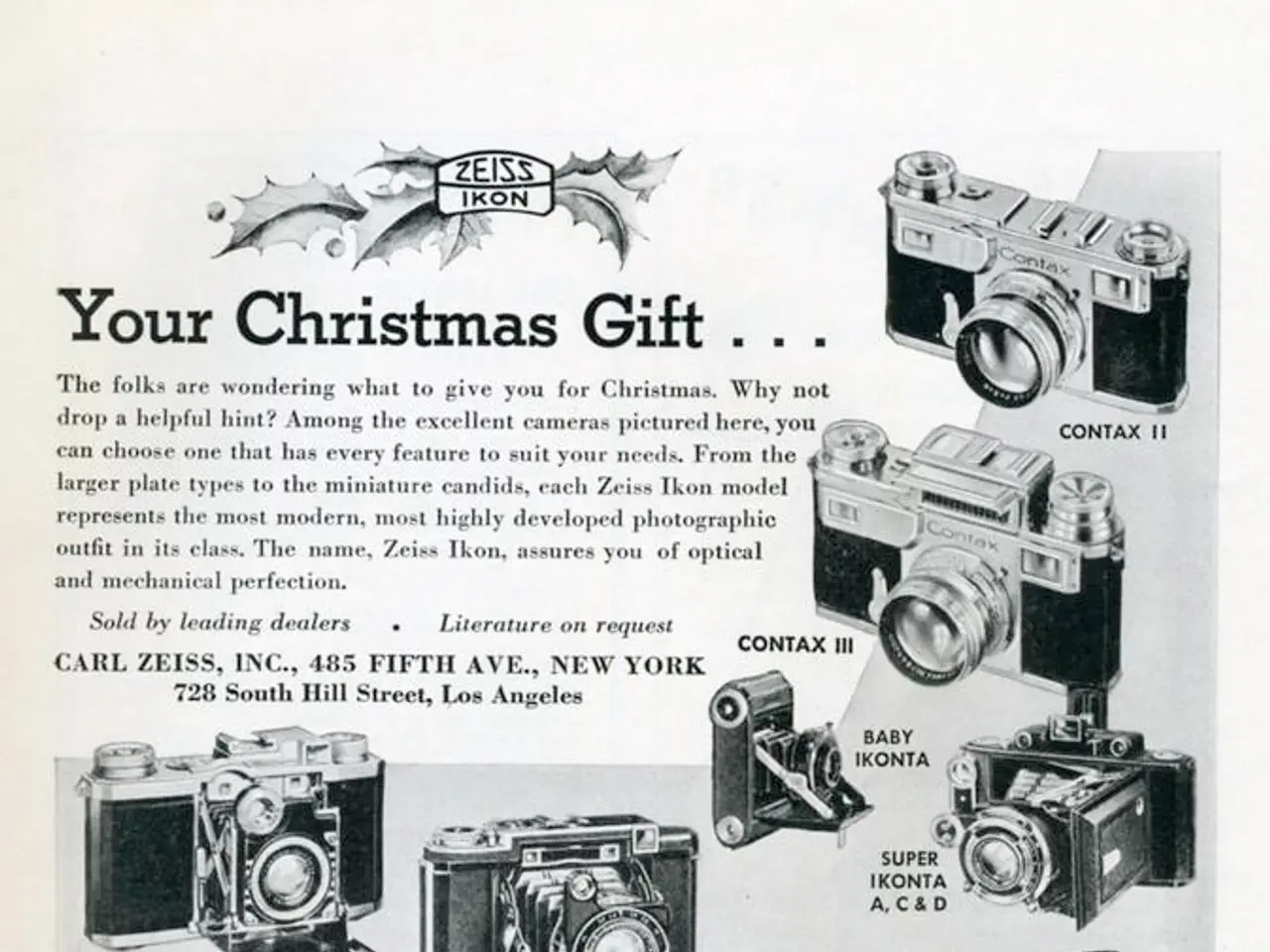Guide for New Photographers: Understanding Camera Lens Filters
Transforming Photography with Camera Lens Filters
Camera lens filters have become an essential tool for photographers, offering a wide range of benefits and creative possibilities. These circular, transparent or semi-transparent pieces of glass or resin, screwed onto the front of a lens, modify light before it enters the camera.
UV Filters
The most common camera lens filters, UV filters, are primarily used for lens protection against ultraviolet light, moisture, dirt, and scratches. They help reduce haze and fogginess, especially in outdoor shooting. While essentially a protective layer, UV filters do not significantly affect image quality.
Polarizing Filters (CPL)
Polarizing filters, also known as Circular Polarizing Filters (CPL), are used to reduce or control reflections from non-metallic surfaces like water, glass, and leaves by blocking polarized light. This results in enhanced color saturation and contrast, making skies bluer and foliage more vivid. Polarizing filters are useful across many genres, including landscapes, portraits (through windows), travel, and street photography.
Neutral Density (ND) Filters
Neutral Density (ND) filters are dark-tinted lenses that reduce the intensity of light entering the lens without affecting color balance. They enable shooting with wider apertures or slower shutter speeds in bright light to achieve motion blur or shallow depth of field. ND filters are common in bright daylight or when using long exposures outdoors.
Graduated Neutral Density (GND) Filters
Graduated Neutral Density (GND) filters have a transition from dark to clear, ideal for balancing exposure between bright skies and darker foregrounds. They are widely used in landscape photography to preserve details in both sky and land.
Color Filters
Color filters are translucent materials that reflect specific light wavelengths and absorb the rest, used for color photography and black-and-white contrast enhancements.
Special Effects Filters
Special effects filters include star filters (create star-like light streaks), soft focus, infrared filters, and kaleidoscopic effects. They are useful for creative or experimental photography to add unique visual effects directly in-camera.
Infrared Filters
Infrared filters block visible light and pass infrared light to capture IR photos, which show unique contrast and false-color or monochrome effects. Different wavelengths produce varied IR effects from colorful to high-contrast monochrome images. Infrared filters are used in specialized artistic and scientific photography.
Macro Filters
Macro filters allow the camera to focus closer for close-up images without needing a dedicated macro lens. They are useful for product demos, detailed shots, or dramatic close-ups.
Using camera lens filters can improve productivity compared to post-production and purchasing expensive editing software. They offer advantages over digital editing, as they provide more editing choices and are less likely to compromise other facets of photography and videography.
[1] Photography Life [2] Digital Camera World [3] Adorama [4] B&H Photo Video [5] NiSi
- With the aid of camera lens filters, photographers can enhance their mission to create stunning visuals, as these filters offer a wide range of creative possibilities and protect the camera from potential damage.
- UV filters, a common type of lens filter, serve as a protective layer against ultraviolet light, moisture, dirt, and scratches, reducing haze and fogginess in outdoor photography.
- To add unique visual effects, photographers can use special effects filters like star filters, soft focus, infrared filters, or kaleidoscopic effects, which are beneficial for creative or experimental photography.
- To boost earning potential, photographers might consider investing in gadgets such as camera lens filters, as they can help improve productivity by providing more editing choices and reducing the need for expensive post-production software.




